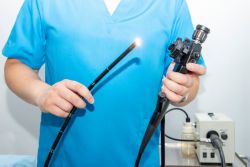Work Practice Controls
Work practice controls reduce the likelihood of exposure by altering how a task is performed.
The recapping of needles using a one-handed technique is an example of a work practice control. Similarly, passing a needle or other sharps device indirectly to another person would be another example of a work practice control.
Operating room work practice controls should include the following:
- Use instruments, rather than fingers, to grasp needles, retract tissue, and load/unload needles and scalpels.
- Give verbal announcements when passing sharps.
- Avoid hand-to-hand passage of sharp instruments by using a basin or neutral zone.
- Use alternative cutting methods such as blunt electrocautery and laser devices when appropriate.
- Substitute endoscopic surgery for open surgery when possible.
- Use round-tipped scalpel blades instead of sharp-tipped blades.
Administrative Controls
Administrative controls are policies established and frequently used with existing processes where hazards are not particularly well controlled. Administrative control programs may be relatively inexpensive to establish but, over the long term, can be very costly to sustain. These methods for protecting workers have also proven to be less effective than other measures, requiring consistent employee adherence and management monitoring.
Policies that prohibit hazardous sharps handling activities should be implemented and required. Examples of hazardous sharps activities include:
- bending needles
- removing contaminated needles
- breaking or shearing contaminated sharps
Knowledge Check Choose the best answer for the question.
1-8. _____ are measures that reduce the likelihood of exposure by changing how a task is performed.
You forgot to answer the question!

